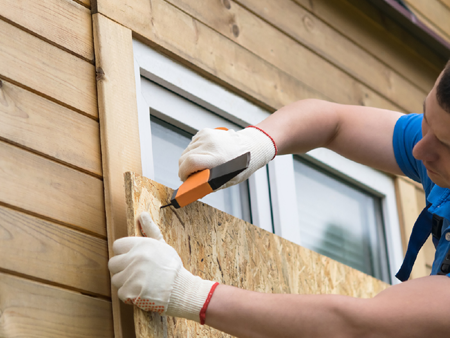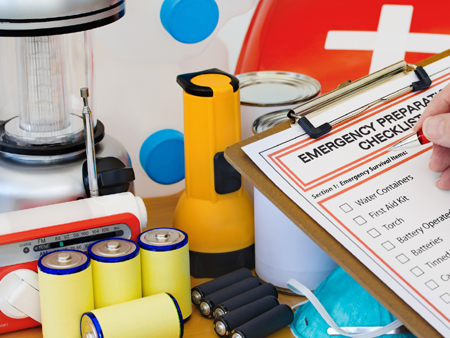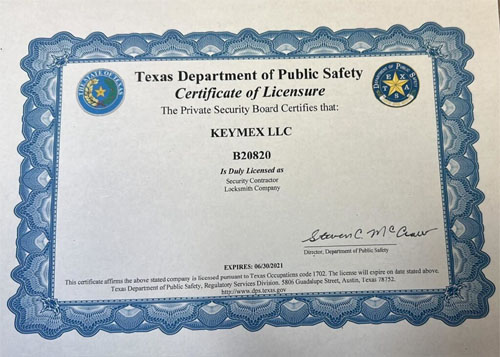Preparing for Natural Disasters: Securing Your Home

Natural disasters can strike unexpectedly, wreaking havoc on communities and leaving a trail of destruction in their wake. From hurricanes and tornadoes to earthquakes and floods, the threat of natural disasters is ever-present, underscoring the importance of proactive preparedness measures. One of the most critical aspects of disaster preparedness is securing your home to minimize damage and ensure the safety of your family. In this blog, we’ll explore essential steps you can take to prepare your home for natural disasters and mitigate potential risks.
 Assess Potential Risks: The first step in preparing your home for natural disasters is to assess the specific risks associated with your geographic location. Research common natural disasters in your area, such as hurricanes, earthquakes, floods, or wildfires, and consider the likelihood and severity of each threat. Understanding the risks will inform your preparedness efforts and help you prioritize mitigation measures.
Assess Potential Risks: The first step in preparing your home for natural disasters is to assess the specific risks associated with your geographic location. Research common natural disasters in your area, such as hurricanes, earthquakes, floods, or wildfires, and consider the likelihood and severity of each threat. Understanding the risks will inform your preparedness efforts and help you prioritize mitigation measures.- Fortify Structures: Strengthening the structural integrity of your home is crucial for withstanding the impact of natural disasters. Conduct a thorough inspection of your property to identify vulnerabilities such as weak foundations, deteriorating roofs, or inadequate structural reinforcements. Consider retrofitting measures such as reinforcing walls, securing roof trusses, or installing storm shutters to protect windows and doors.
- Secure Loose Items: Loose outdoor items such as patio furniture, garden tools, and decorative objects can become dangerous projectiles during high winds or storms. Secure or bring indoors any items that could be picked up by strong winds and cause damage to your home or neighboring properties. Consider investing in storage sheds or bins to keep outdoor equipment safely stowed away when not in use.
- Trim Trees and Vegetation: Overhanging branches and overgrown vegetation pose a risk during severe weather events, potentially causing damage to roofs, windows, and power lines. Trim trees and shrubs around your property to reduce the risk of falling debris during storms or high winds. Regularly maintain your landscaping to minimize the accumulation of dead branches and foliage that could fuel wildfires.
- Install Reinforcements and Protective Measures: Depending on the type of natural disasters prevalent in your area, consider installing specific reinforcements and protective measures to safeguard your home. This may include seismic retrofitting for earthquake-prone regions, flood barriers or sump pumps for flood-prone areas, or lightning rods and surge protectors for areas prone to lightning strikes.
- Create an Emergency Preparedness Kit: Assemble a comprehensive emergency preparedness kit containing essential supplies and provisions to sustain your family in the event of a natural disaster. Include items such as non-perishable food, water, flashlights, batteries, first aid supplies, and important documents. Store the kit in a readily accessible location and ensure that all family members know its whereabouts.
 Develop an Evacuation Plan: In some situations, evacuating your home may be necessary to ensure your safety in the face of an imminent natural disaster. Develop a detailed evacuation plan that outlines escape routes, designated meeting points, and emergency contacts. Practice evacuation drills with your family to familiarize everyone with the plan and ensure a swift and orderly evacuation if needed.
Develop an Evacuation Plan: In some situations, evacuating your home may be necessary to ensure your safety in the face of an imminent natural disaster. Develop a detailed evacuation plan that outlines escape routes, designated meeting points, and emergency contacts. Practice evacuation drills with your family to familiarize everyone with the plan and ensure a swift and orderly evacuation if needed.- Stay Informed and Alert: Keep abreast of weather forecasts and emergency alerts issued by local authorities to stay informed about potential threats in your area. Invest in weather monitoring devices or smartphone apps that provide real-time updates on weather conditions and disaster warnings. Remain vigilant and prepared to take immediate action in response to changing circumstances.
Conclusion:
preparing your home for natural disasters requires foresight, planning, and proactive measures to mitigate risks and ensure the safety of your family and property. By assessing potential risks, fortifying structures, securing loose items, trimming trees and vegetation, installing reinforcements, creating an emergency preparedness kit, developing an evacuation plan, and staying informed and alert, you can enhance the resilience of your home and minimize the impact of natural disasters. Remember, the best time to prepare is before disaster strikes, so don’t wait until it’s too late to safeguard your home and loved ones.

 Assess Potential Risks: The first step in preparing your home for natural disasters is to assess the specific risks associated with your geographic location. Research common natural disasters in your area, such as hurricanes, earthquakes, floods, or wildfires, and consider the likelihood and severity of each threat. Understanding the risks will inform your preparedness efforts and help you prioritize mitigation measures.
Assess Potential Risks: The first step in preparing your home for natural disasters is to assess the specific risks associated with your geographic location. Research common natural disasters in your area, such as hurricanes, earthquakes, floods, or wildfires, and consider the likelihood and severity of each threat. Understanding the risks will inform your preparedness efforts and help you prioritize mitigation measures. Develop an Evacuation Plan: In some situations, evacuating your home may be necessary to ensure your safety in the face of an imminent natural disaster. Develop a detailed evacuation plan that outlines escape routes, designated meeting points, and emergency contacts. Practice evacuation drills with your family to familiarize everyone with the plan and ensure a swift and orderly evacuation if needed.
Develop an Evacuation Plan: In some situations, evacuating your home may be necessary to ensure your safety in the face of an imminent natural disaster. Develop a detailed evacuation plan that outlines escape routes, designated meeting points, and emergency contacts. Practice evacuation drills with your family to familiarize everyone with the plan and ensure a swift and orderly evacuation if needed.